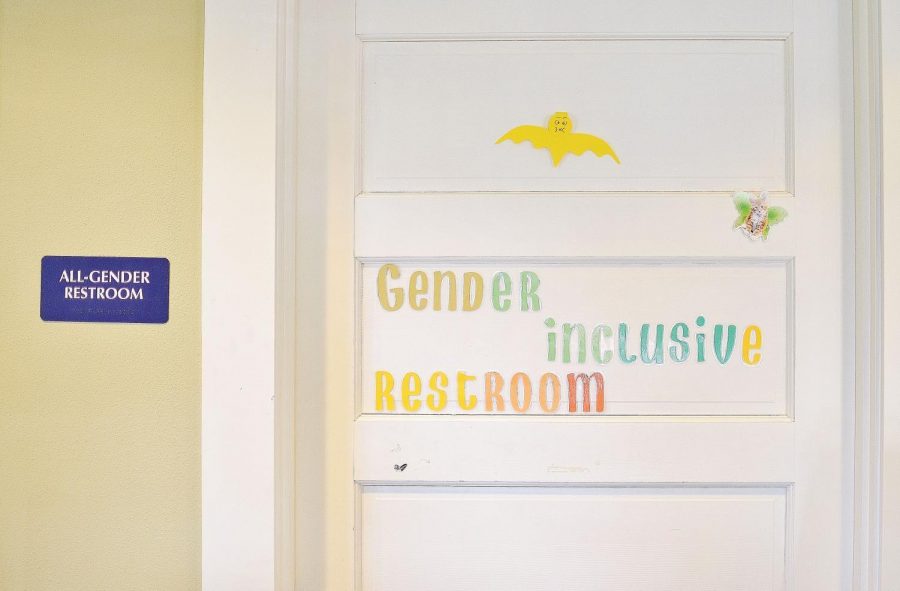Oregon State University has over 200 gender inclusive on campus with plans for even more
January 29, 2016
The University of Oregon may have us beat in football, but when in it comes to gender inclusivity on campus, Oregon State University comes out on top. OSU has more than double the amount of gender inclusive bathrooms than UO. There are more than 200 gender inclusive bathrooms with a promise to add more in the future.
This change is intended to create a space where students who identify outside of the male-female gender binary can feel more comfortable and avoiding stress experienced in binary men’s and women’s restrooms.
“There are more genders than just man and woman, gender is on a spectrum.” said Shannon Sandy, a leadership liaison at the OSU Pride Center.
Along this spectrum is Tara Crockett, also a leadership liaison of the Pride Center, who identifies as trans and prefers gender-neutral pronouns such as ‘they’ and ‘them’. Crockett is a passionate advocate for gender-inclusivity and stresses the importance of having gender-iclusive facilities in order for trans students to go about their everyday life.
“Entering binaried spaces like that is not only dangerous for trans people statistically, it also just creates a lot of stress,” Crockett said, listing verbal assaults, stares, and physical violence as potential threats that trans students have to worry about when going into a binaried restroom.
“Trans people are much more likely to be the victim of an assault in a restroom than the instigator,” Crockett said.
Crockett said that while inclusive restrooms are important, they would also like to see more awareness and advocacy around gender issues, and expressed concerns over incidents such as misgendering of students by professors and peers.
“It’s always important to have a place where you feel like you belong and you’re included,” said Malik Ensley, another leadership liaison for the Pride Center. “If you identify as a man and there are only women’s restrooms around, you’re not going to feel like you even have a place to go to the bathroom.”
Ensley expressed that he does not feel like there are enough gender-inclusive bathrooms on campus and that the ones that do exist can sometimes be difficult to find.
“You can find men’s and women’s bathrooms on almost every floor, but to find the gender-inclusive one you need to go into Narnia or follow the yellow brick road.” Ensley said.
While a map of gender-inclusive bathrooms does exist for the campus, it has not been updated in a couple years and only displays 38 locations around campus which is problematic because many have been added in recent years.
“In 2008 there were less than 30 gender-inclusive restrooms on campus that we can identify by records. Today there are 200,” said Steve Clark, vice president for university relations and marketing. “All forms of inclusivity are a priority to this university.”
Steve Clark said that all new building constructions and all major renovations will now feature restrooms that are both gender-inclusive and accessible to people with disabilities. “Through conversations with students about diversity, inclusivity, and safety, we have elevated our communications about inclusivity and inclusive excellence,” Clark said.
While the university’s efforts are apparent and appreciated, Sandy, Crockett, and Ensley feel that an ideal situation would be for gender-inclusive bathrooms to be as abundant as gender-binary ones.
“The university needs to care about its trans students,” Crockett said. “And having gender-inclusive bathrooms says your gender is invited into this space.”











































































































